50+ AI Agent Examples You’ll See Everywhere

Preetam Das
July 22, 2025
10 min
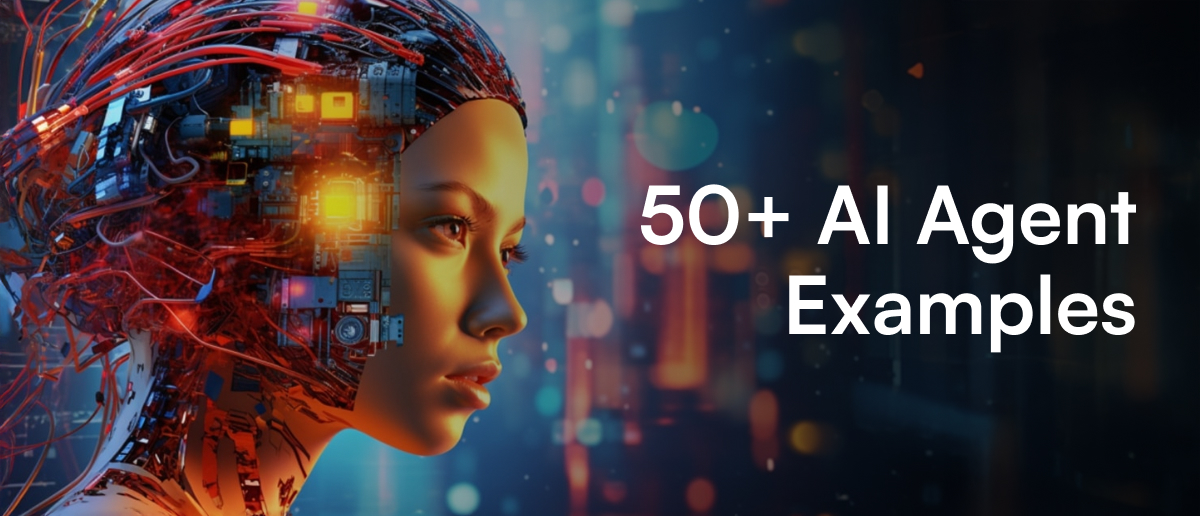
Table of Contents
You must have heard, AI agents are making life easier and even taking over tasks that used to take teams hours or days to finish. They’re getting work done in minutes, with no hand-holding. And they’re only getting smarter. This is quickly becoming the new normal.
Anyone using AI agents will be faster, sharper, and way ahead of those still doing things the old way. AI agents are helping businesses grow, streamline operations, and work smarter, leading to new AI agent trends in small businesses that help save time and grow faster.
AI agents can be divided into different types based on how they perceive their environment, make decisions, and act toward goals. These classifications reflect the underlying architecture and intelligence each agent uses to function, from rule-based systems to agents that learn and collaborate in real-time.
The primary types include:
- Simple reflex agents
- Model based reflex agents
- Goal based agents
- Utility based agents
- Learning agents
- Autonomous agents
- Multi agent systems (MAS)
- Hierarchical agents
To understand how these types work and differ, read our in-depth article on 8 Types of AI Agents: A Comparison Guide.
Below are real-world examples of AI agents
Examples of Simple Reflex Agents
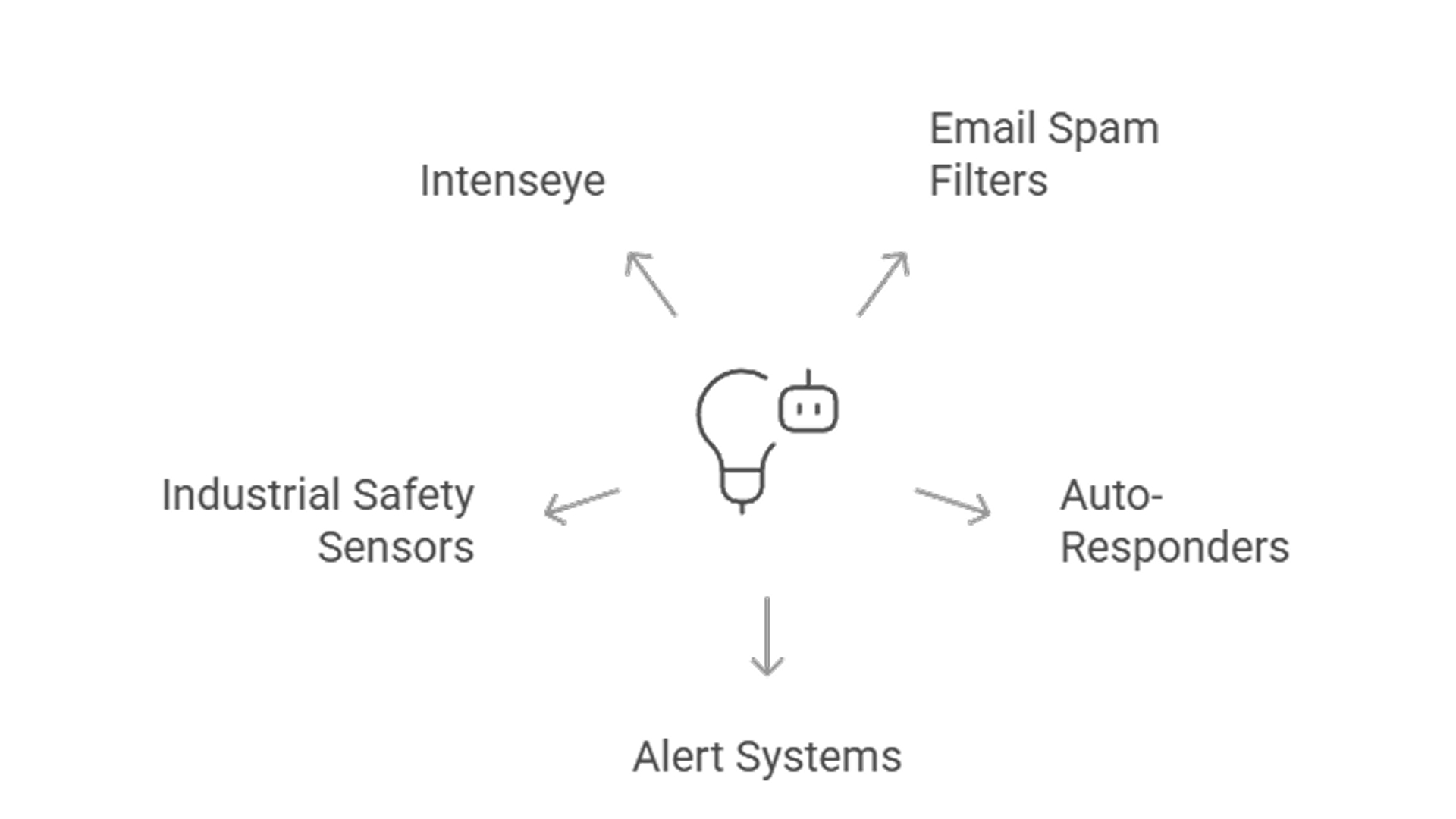
- Email spam filters: At the basic level, spam filters follow rule-based triggers such as keyword detection or sender reputation to flag emails. They don’t rely on memory or adapt to new patterns without manual updates, hence qualify as simple reflex agents.
- Auto-responders: These agents reply instantly with fixed responses when triggered by certain keywords or phrases, e.g., "reset password." They respond to the current input without referencing previous interactions.
- Alert systems: When system performance metrics like CPU usage or latency breach a threshold, these agents issue alerts. Their operations follow strict "if-this-then-that" logic with no context tracking.
- Industrial safety sensors: These sensors immediately shut down machines upon detecting an obstruction. Their immediate reaction to stimuli without contextual awareness places them firmly under simple reflex agents.
- Intenseye: In basic deployments, Intenseye detects visual safety violations and triggers alerts based on predefined visual inputs, without deeper environmental modeling or learning.
Examples of Model-Based Reflex Agents:
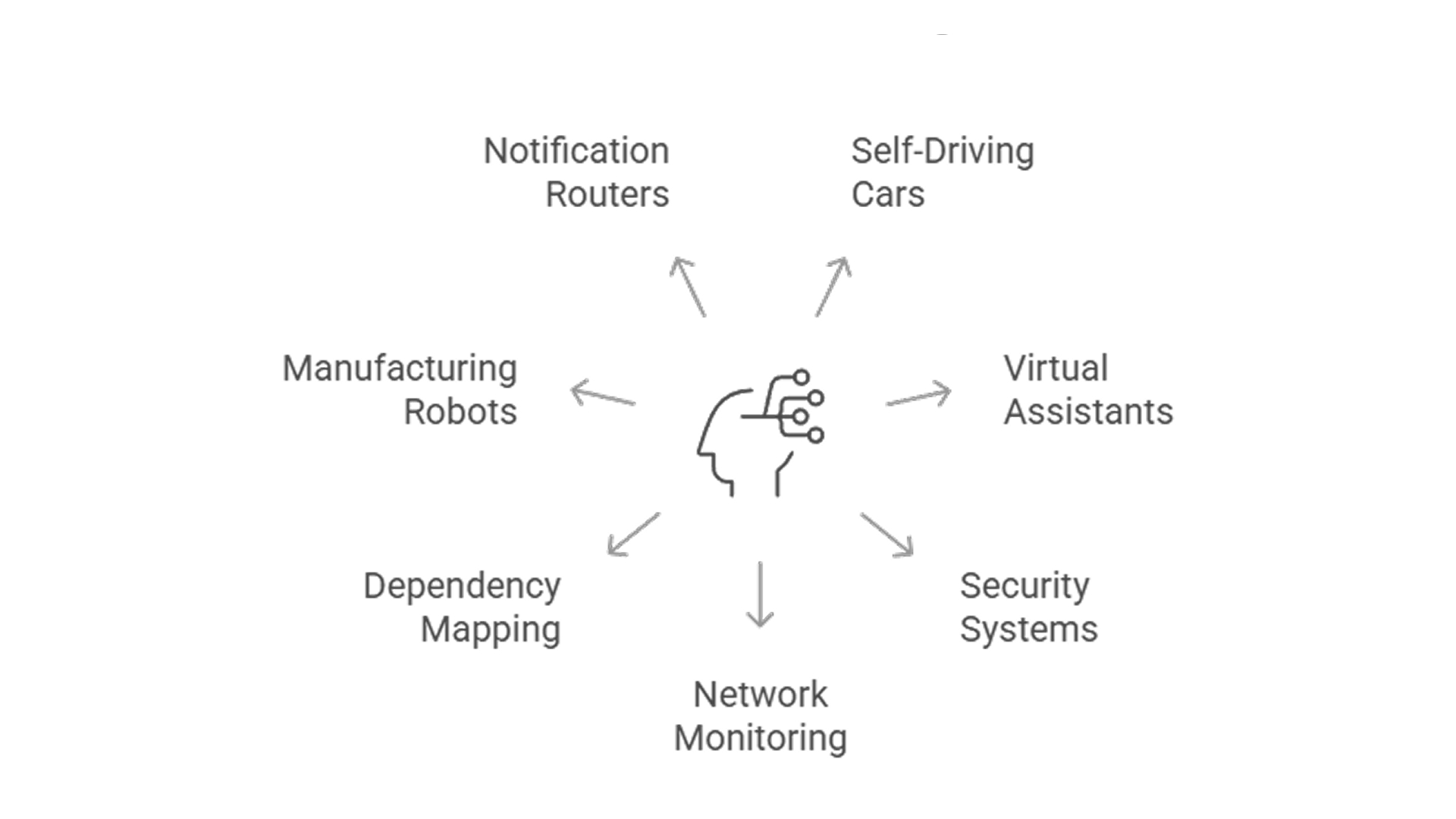
- Self-driving cars: These agents perceive their surroundings through sensors and use internal models to navigate. They make predictions based on their real-time model of the environment, allowing for actions like braking or lane changes.
- Alexa and Google Assistant: These assistants remember past commands and context to provide personalized, relevant answers. Their use of an internal model to interpret and adapt makes them model-based reflex agents.
- Smart home security systems: These systems compare real-time sensor input to historical behavior patterns to detect anomalies, showing they maintain and act on an internal model.
- Network monitoring tools: These systems detect anomalies in traffic flow by comparing current data against historical baselines. Their internal state tracking defines them as model-based agents.
- Service dependency mapping agents: These agents analyze alert chains and service relations to trace the source of system failures. Their actions depend on an internal understanding of service interdependencies.
- Manufacturing robots: These robots use continuous sensor data to adapt and perform precise actions like welding or assembly. They update their internal models in real time.
- Context-aware notification routers: These agents decide where to route messages based on context like urgency or team availability, guided by an evolving model of the workplace environment.
Examples of Goal-Based Agents
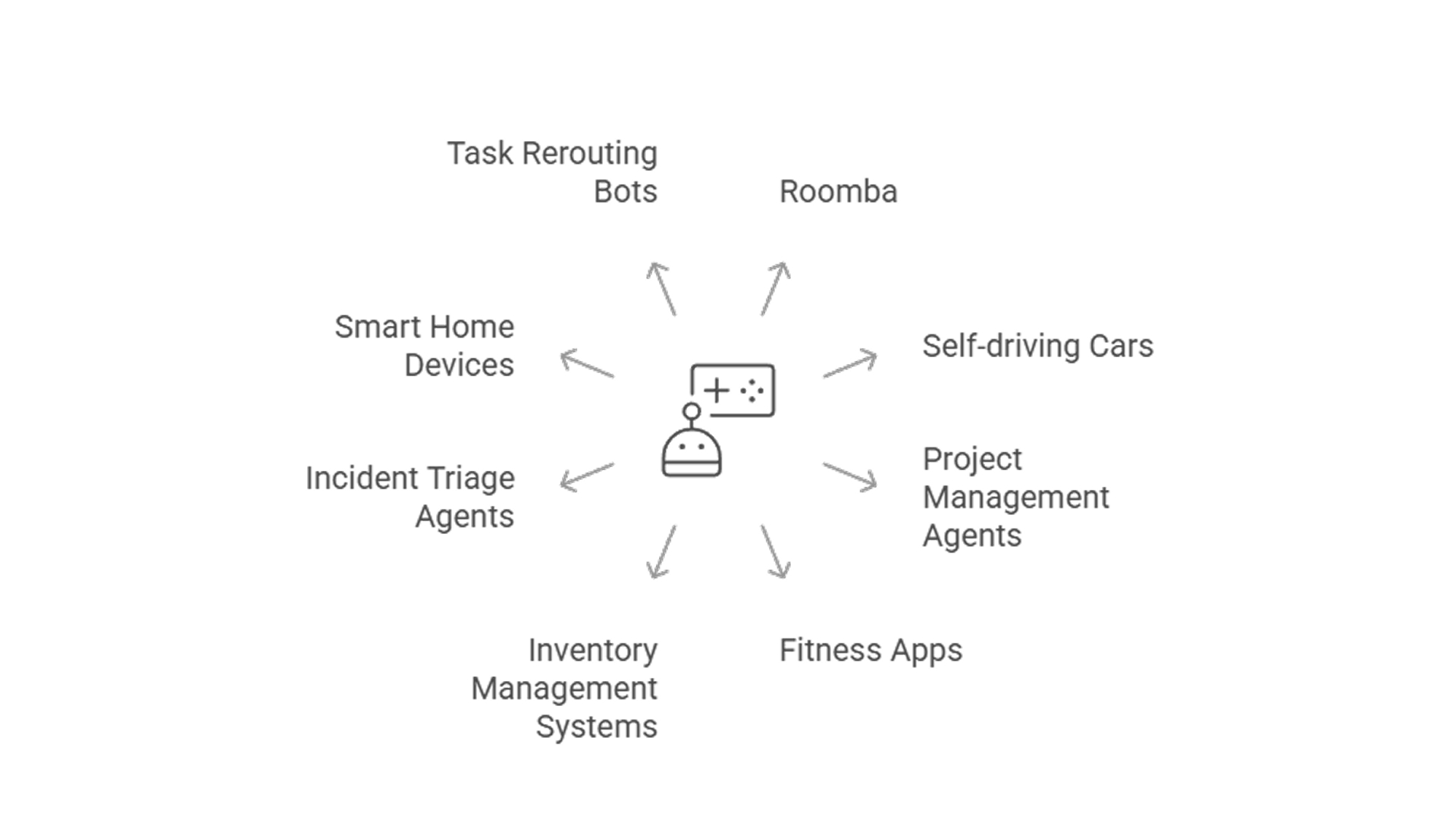
- Roomba: Roomba is tasked with cleaning an entire space. It navigates using a goal ("clean the area") and takes actions like turning or retracing steps to fulfill this objective.
- Self-driving cars: These agents prioritize reaching a specific destination safely. Every maneuver is evaluated based on its contribution to that goal, qualifying them as goal-driven agents.
- Project management agents: These agents schedule tasks and allocate resources to meet deadlines. Their actions aim to achieve specific project milestones.
- Fitness apps: These apps design routines to help users achieve specific health goals. Every workout or plan is chosen based on how effectively it helps users reach their targets.
- Inventory management systems: These agents keep stock levels optimized by planning reorders and managing supply chains based on forecasted needs and inventory goals.
- Incident triage agents: They prioritize critical system incidents to minimize downtime. The objective here is to restore system health as quickly as possible.
- Smart home devices: Devices like smart thermostats aim to maintain a desired comfort level. They adjust settings based on how close or far the environment is from the target.
- Task rerouting bots: These systems dynamically shift workload across teams or systems to meet deadlines or reduce operational bottlenecks, aligning every action with efficiency goals.
Examples of Utility-Based Agents
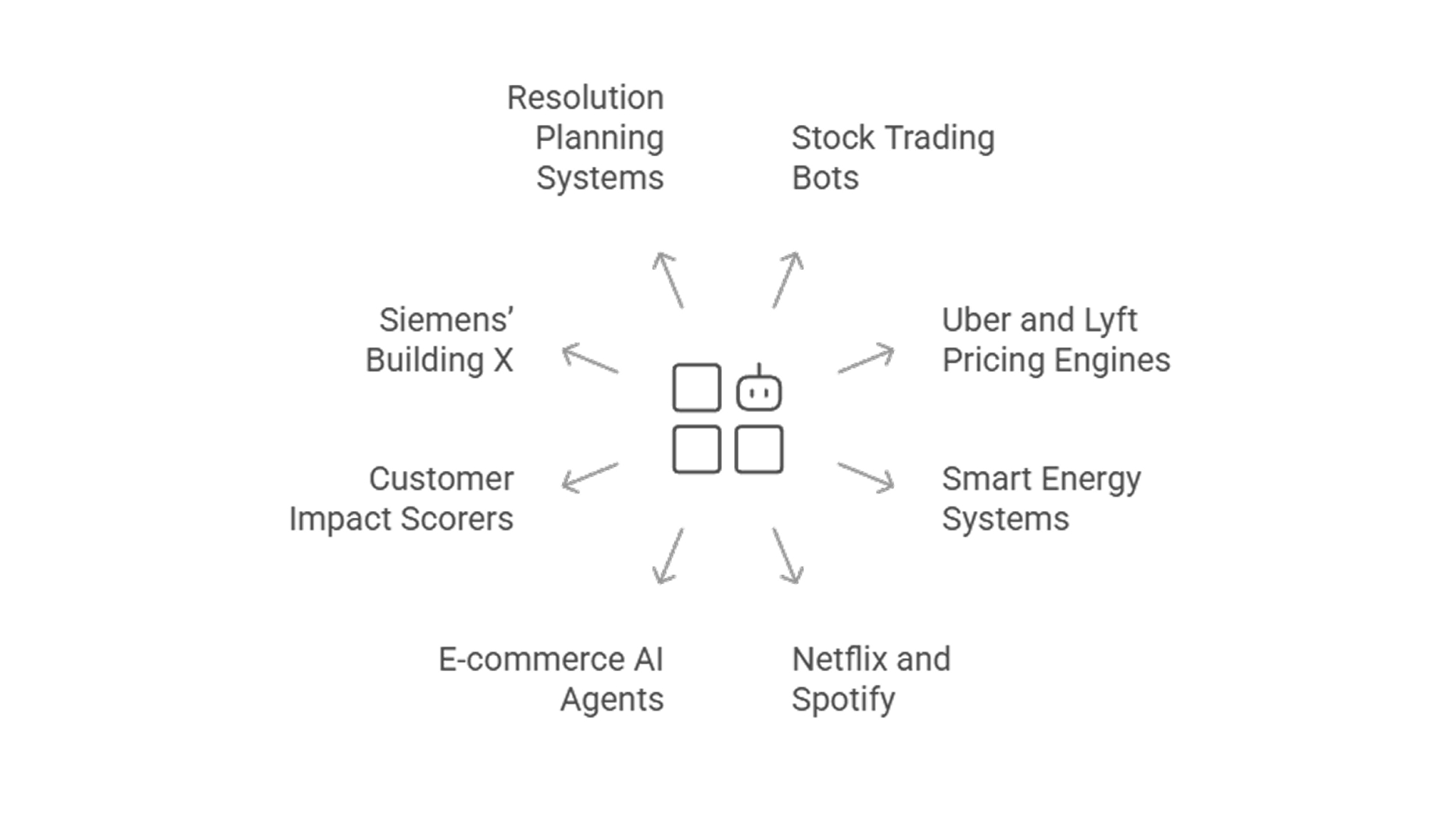
- Stock trading bots: These agents analyze markets to maximize returns and minimize risks. Each trade is evaluated based on how it contributes to portfolio profitability.
- Uber and Lyft pricing engines: These systems dynamically price rides to balance demand and driver availability. The decision model maximizes platform efficiency and revenue.
- Smart energy systems: These systems balance user comfort, energy cost, and carbon impact by continuously optimizing energy consumption for maximum utility.
- Netflix and Spotify: Their recommendation engines optimize content selection based on predicted engagement, increasing user satisfaction and retention.
- E-commerce AI agents: These agents present products based on likelihood of purchase and profitability, maximizing user engagement and conversion.
- Customer impact scorers: They prioritize responses to issues based on how many users are affected, balancing urgency with business value.
- Siemens’ Building X: This platform controls systems like HVAC based on a utility function that weighs cost savings, comfort, and sustainability.
- Resolution planning systems: These systems assess possible actions and choose the one with the best balance of cost, risk, and outcome value.
Examples of Learning Agents
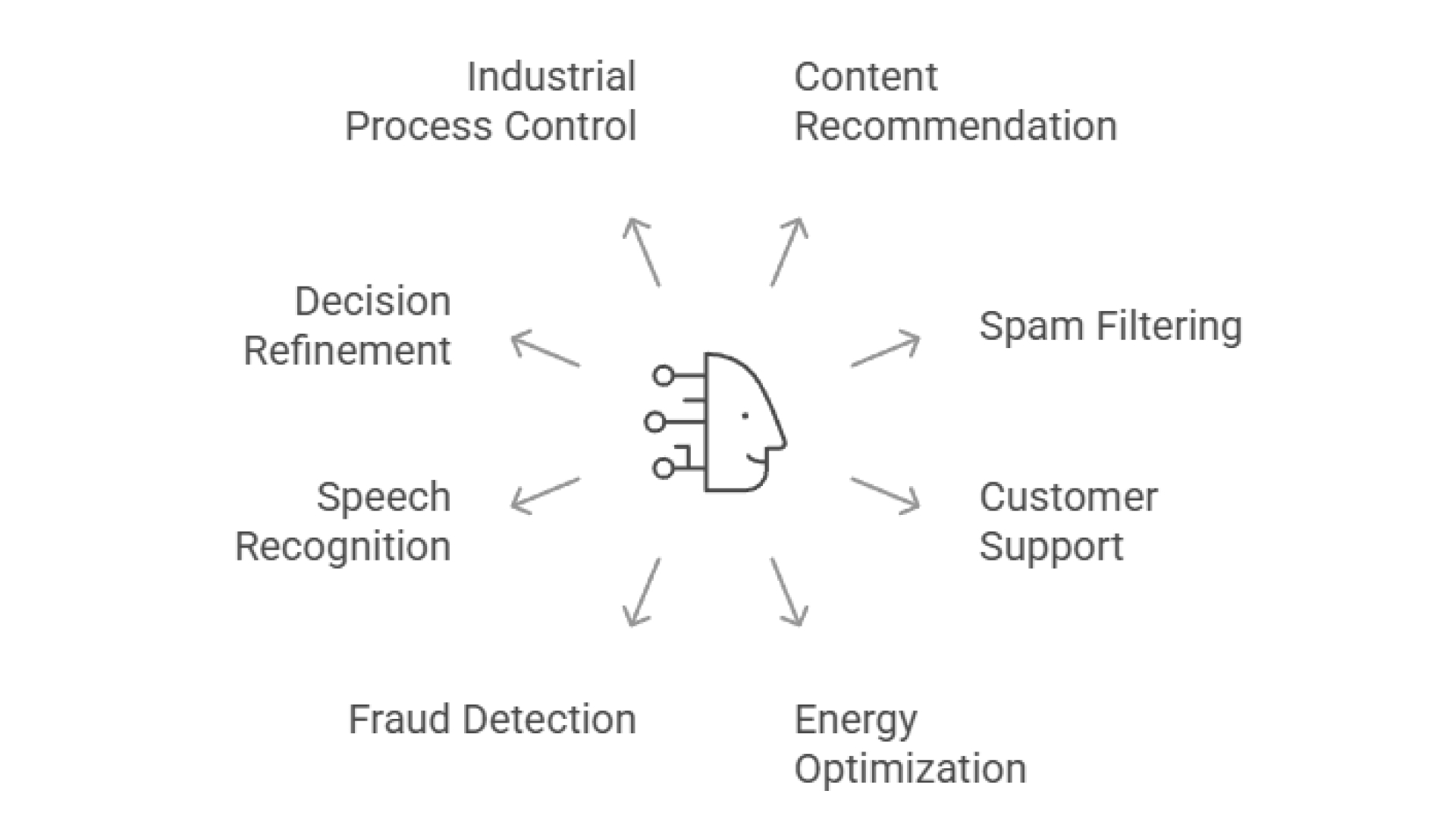
- YouTube, Netflix, Spotify: These platforms learn user preferences over time to fine-tune content recommendations, adapting to behavioral trends.
- Spam filters: They continuously adapt by incorporating user feedback, improving accuracy beyond basic keyword filtering.
- Ada: This customer support agent adapts its responses based on previous interactions, helping it serve better over time.
- Nest thermostat: It learns users' schedules and preferences to optimize temperature and energy usage autonomously.
- Fraud detection systems: These agents evolve with new data patterns to detect and prevent fraud in ever-changing environments.
- Speech recognition systems: These systems become more accurate as they are exposed to more voice inputs, learning accents and user speech habits.
- Post-incident learning agents: They evaluate the outcomes of actions and refine future decision-making based on what worked or failed.
- Industrial process controllers: These agents optimize operations over time by learning how different inputs affect performance outcomes.
Examples of Autonomous Agents
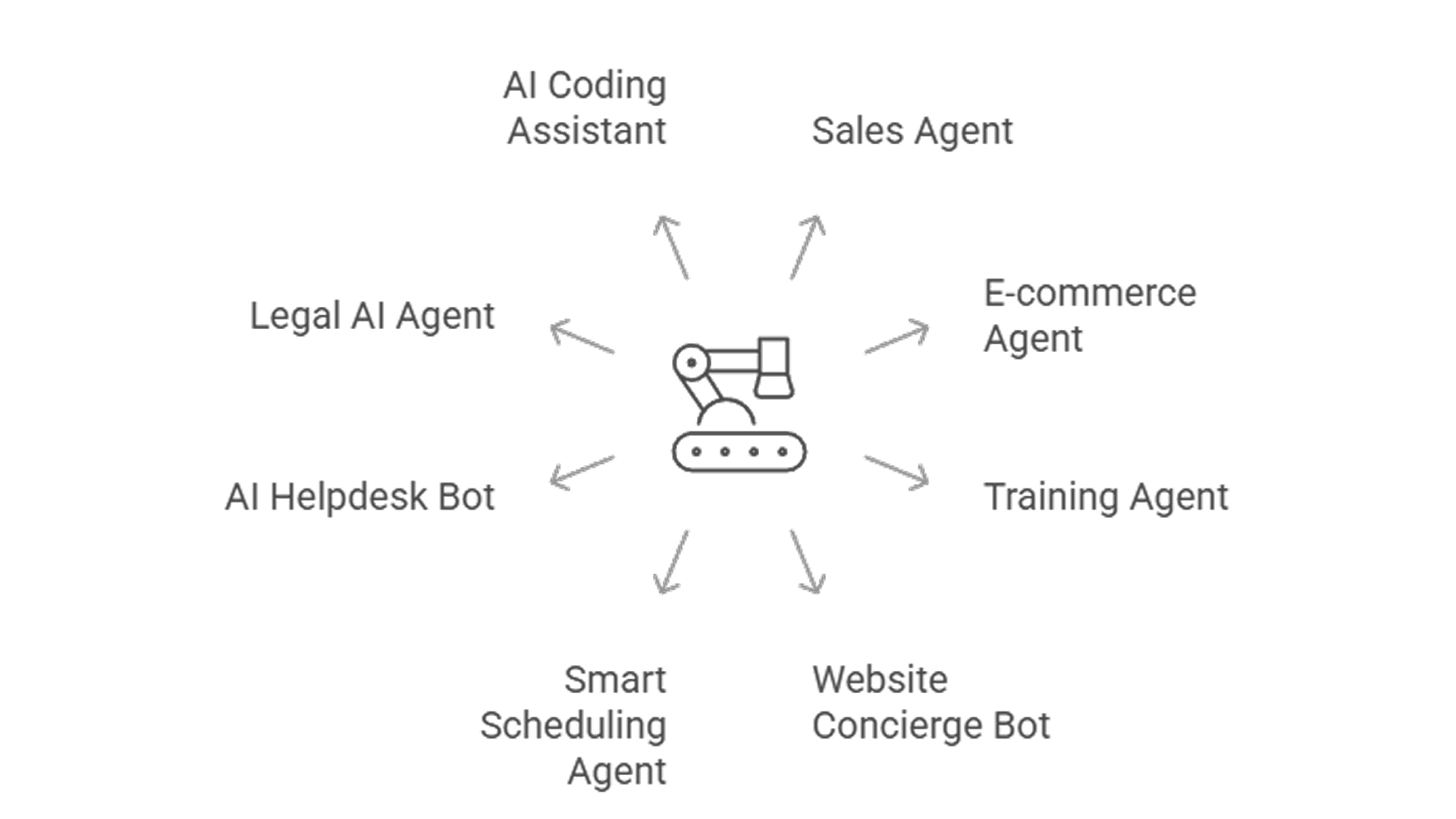
- Otter SDR Agent: This AI sales agent autonomously handles demo scheduling and outreach, needing no human to trigger its workflows once launched.
- E-commerce checkout agents: These tools autonomously complete orders, manage inventory, and handle user notifications post-purchase.
- Training agents: These deliver instruction, adapt content, and assess performance without instructor input.
- Website concierge bots: They greet, assist, and route users based on real-time behavior, working independently of human operators.
- Smart scheduling agents: Automatically coordinate meetings based on calendar data and availability, requiring no back-and-forth.
- AI helpdesk bots: Resolve HR or IT queries, raise tickets, and route problems autonomously.
- Legal AI agents: Scan documents, draft legal content, and recommend actions independently.
- AI coding assistants: Generate, debug, and optimize code based on a programming goal, executing tasks autonomously.
Also read: What are Autonomous AI Agents
Examples of Multi-Agent Systems
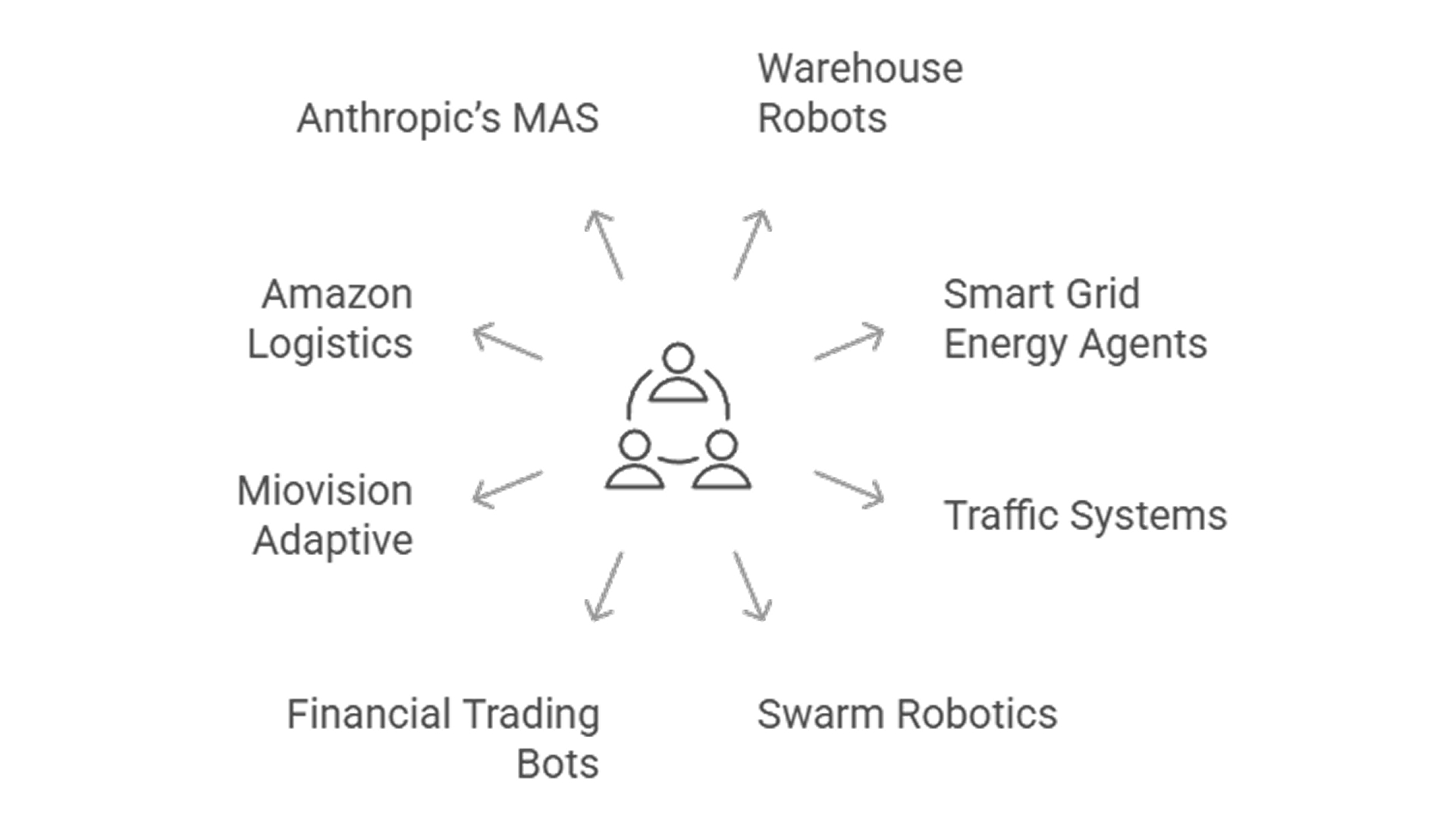
- Warehouse robots: Multiple bots communicate to sort, move, and package items collaboratively.
- Smart grid energy agents: These systems balance energy supply and demand across different nodes, communicating to maintain grid stability.
- Traffic systems: Various agents (traffic lights, cameras) coordinate to smooth traffic flow in real-time.
- Swarm robotics: Robots share sensory data and act collectively to map terrains or conduct rescue missions.
- Financial trading bots: Multiple trading agents act on different strategies and data streams to optimize trading outcomes.
- Miovision Adaptive: Uses distributed AI agents to control traffic lights and improve city-wide flow.
- Amazon logistics: Agents coordinate across warehouses and delivery networks to optimize route planning and order fulfillment.
- Anthropic’s MAS: Research agents collectively gather, analyze, and synthesize information using Claude models.
Examples of Hierarchical Agents
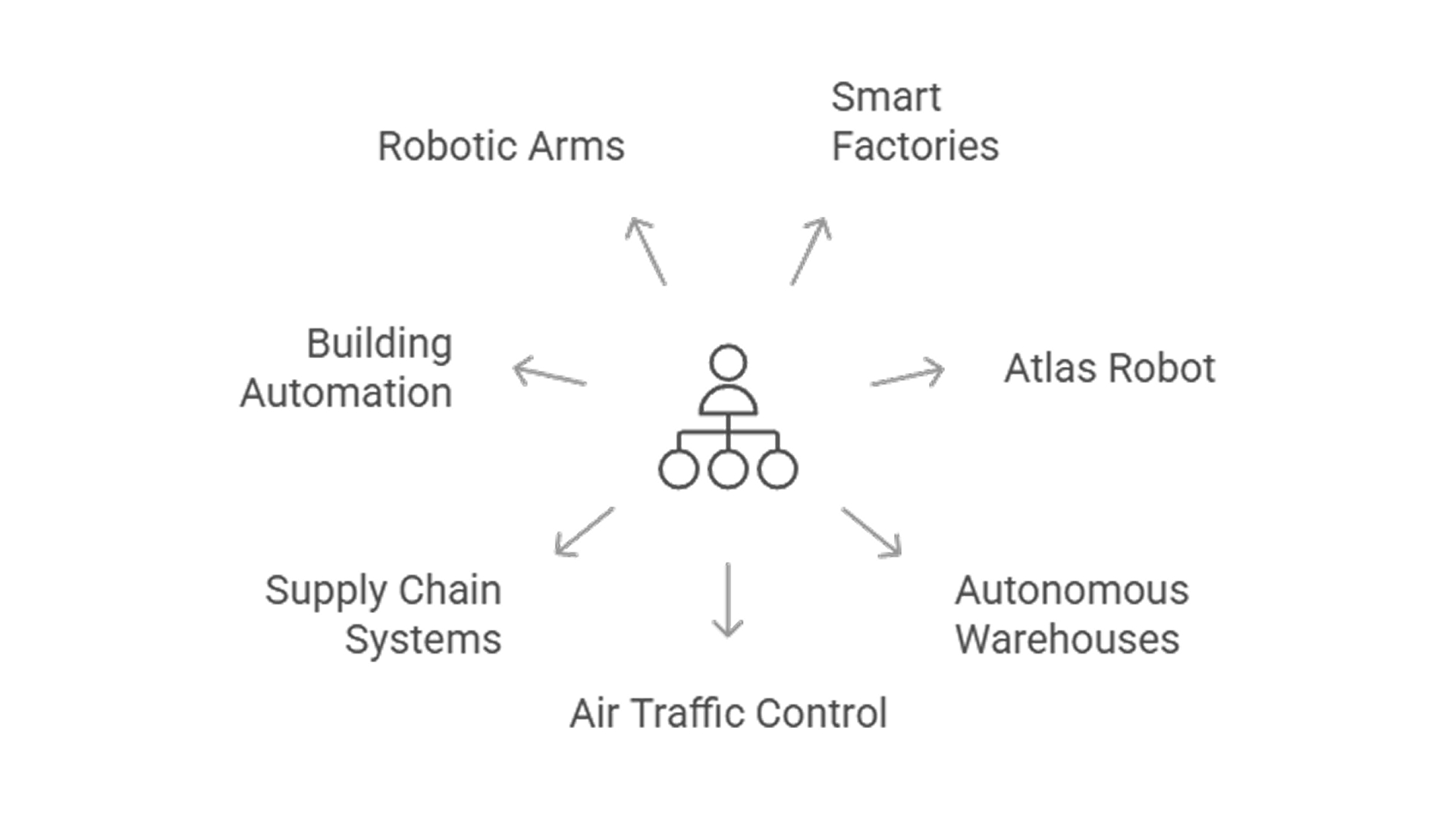
- Smart factories: Top-level agents handle scheduling, while sub-agents control machines or sensors for specific tasks.
- Boston Dynamics' Atlas: High-level agents direct the robot's tasks, while lower-level control balance and motion.
- Autonomous warehouses: Strategy-level agents direct operations, while worker bots pick and transport items.
- Air traffic control systems: Regional agents manage airspace flow, with local agents directing taxiing, takeoff, and landing.
- Supply chain systems: Upper-layer agents forecast and allocate inventory; lower layers handle execution at warehouses.
- Building automation systems: System-wide energy optimization is managed by top agents; subsystems handle HVAC or lighting.
- Robotic arms: High-level planners assign assembly goals; low-level actuators execute physical movements.
Conclusion
AI agents are already embedded into the systems and operations we interact with every day. These agents simplify life by handling repetitive or complex tasks, freeing up people to focus on higher-value work. At the core of many AI agents are large language models (LLMs), which give them the ability to understand natural language and make intelligent decisions.
While ChatGPT requires a prompt for every interaction, AI agents can be configured with goals and then operate independently, executing multi-step tasks without constant human input.
With the rise of frameworks like the model context protocol (MCP), AI agents are becoming even more powerful. They can now work together, coordinate across systems, and handle more advanced, interconnected workflows with minimal oversight.
Thinkstack is an AI agent builder that lets you create advanced AI agents for your business. You can automate tasks, streamline workflows, and build smart AI chatbots for customer service, all without writing code or needing technical expertise.
Try Thinkstack’s AI in action
Get started for freeFrequently Asked Questions (FAQs)
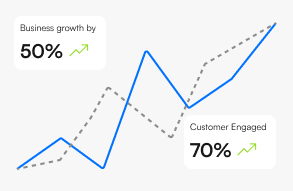
Grow Your Business with AI Agents
- Automate tasks
- Engage customers 24/7
- Boost conversions